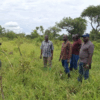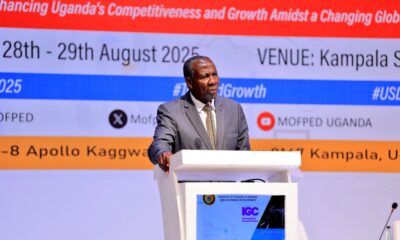Economy
Uganda’s Stock Market Posts Strong Recovery as Investment Returns Surge
Uganda’s capital markets are showing strong signs of recovery and growth, with both the Capital Markets Authority (CMA) and the Uganda Securities Exchange (USE) reporting increased investor confidence and positive returns in the first half of 2025. The market’s performance marks a significant rebound from the economic slowdown caused by the COVID-19 pandemic.
The All Share Index, a benchmark tracking the overall growth of the stock market, rose by 25.14% to 1,287 points, while the Local Share Index, which focuses solely on locally listed companies, saw an even sharper rise of 30.42% to 337.8 points. These figures signal not only a return to pre-pandemic momentum but also a bullish outlook for the remainder of the year.
Paul Bwiso, Chief Executive Officer of the Uganda Securities Exchange, attributed the growth to a mix of factors, including increased returns on investment, rising stock prices, dividend payouts, and a strengthening Kenyan shilling. “This half has been especially rewarding for investors, with counters like Bank of Baroda, MTN Uganda, Umeme, and Stanbic delivering impressive returns of more than 50 per cent,” Bwiso said.
Bwiso noted that despite a few mixed results—such as Uganda Clays and NIC, whose share prices fell compared to the same period in 2024—most stocks posted positive trends. He emphasised that the USE remains an attractive option for both new and experienced investors, especially those seeking opportunities to cash out profitably.
Notably, the market remained resilient amid temporary turbulence, including the two-month suspension of the Umeme counter over government disagreements concerning the company’s exit from the electricity distribution concession. The structural separation of MTN Mobile Money from MTN Uganda into two entities also had minimal impact on overall performance.
Trading volumes reflected a renewed appetite for equities. The USE recorded a turnover of UGX 38.5 billion, with 446 million shares traded in 3,903 deals—a 68% increase in volume compared to the previous reporting period.
Bwiso highlighted strong performance in the government securities trading segment, largely driven by the introduction of a mobile phone-based trading system. This innovation has opened up access to retail investors, encouraging wider participation in the financial markets.
Another key development is the acceleration of the Uganda Commodity Exchange (UCE), which has onboarded over 6,000 farmers. UCE offers a physical trading platform for graded produce such as maize, coffee, beans, rice, soya, and sesame, and helps farmers secure financing based on warehouse receipts. So far, 16 metric tonnes have been traded, with projections to reach 25,000 tonnes next season.
CMA Chief Executive Officer Josephine Okui Ossiya reaffirmed the Authority’s commitment to innovation, transparency, and investor protection. She cited the launch of Uganda’s first Capital Markets Handbook, which includes essential research and investor education materials, as part of efforts to improve financial literacy and public participation.
Other significant milestones include the approval of Regulatory Sandbox Guidelines to support financial innovation, the licensing of five commercial banks as securities dealers, and the launch of Uganda’s first credit rating agency under CMA’s oversight.
As the country continues to deepen its capital markets and broaden participation across economic sectors, Uganda’s financial ecosystem is being redefined—with equities, government securities, and commodities all emerging as viable and accessible investment avenues for both institutional and retail players.
Comments



























